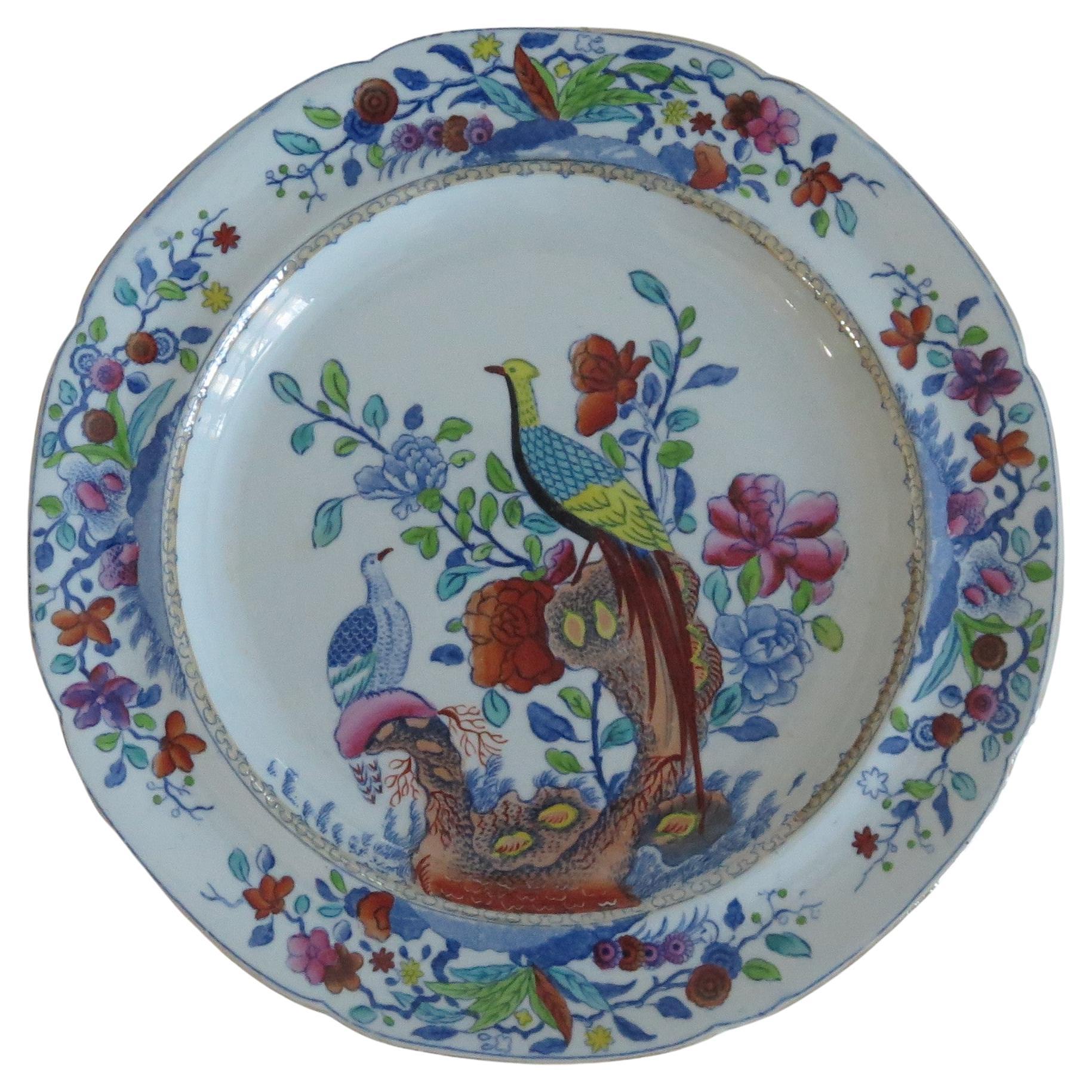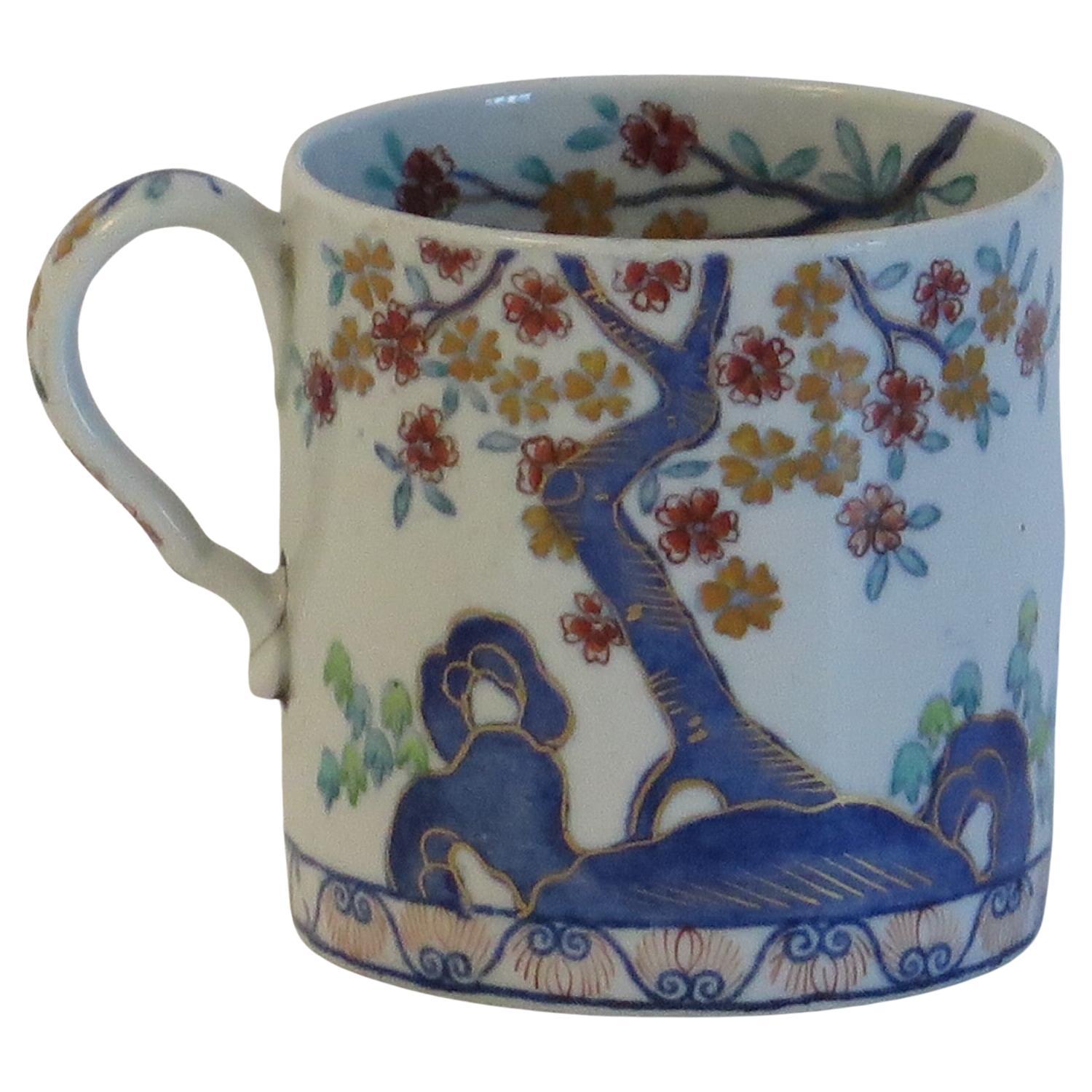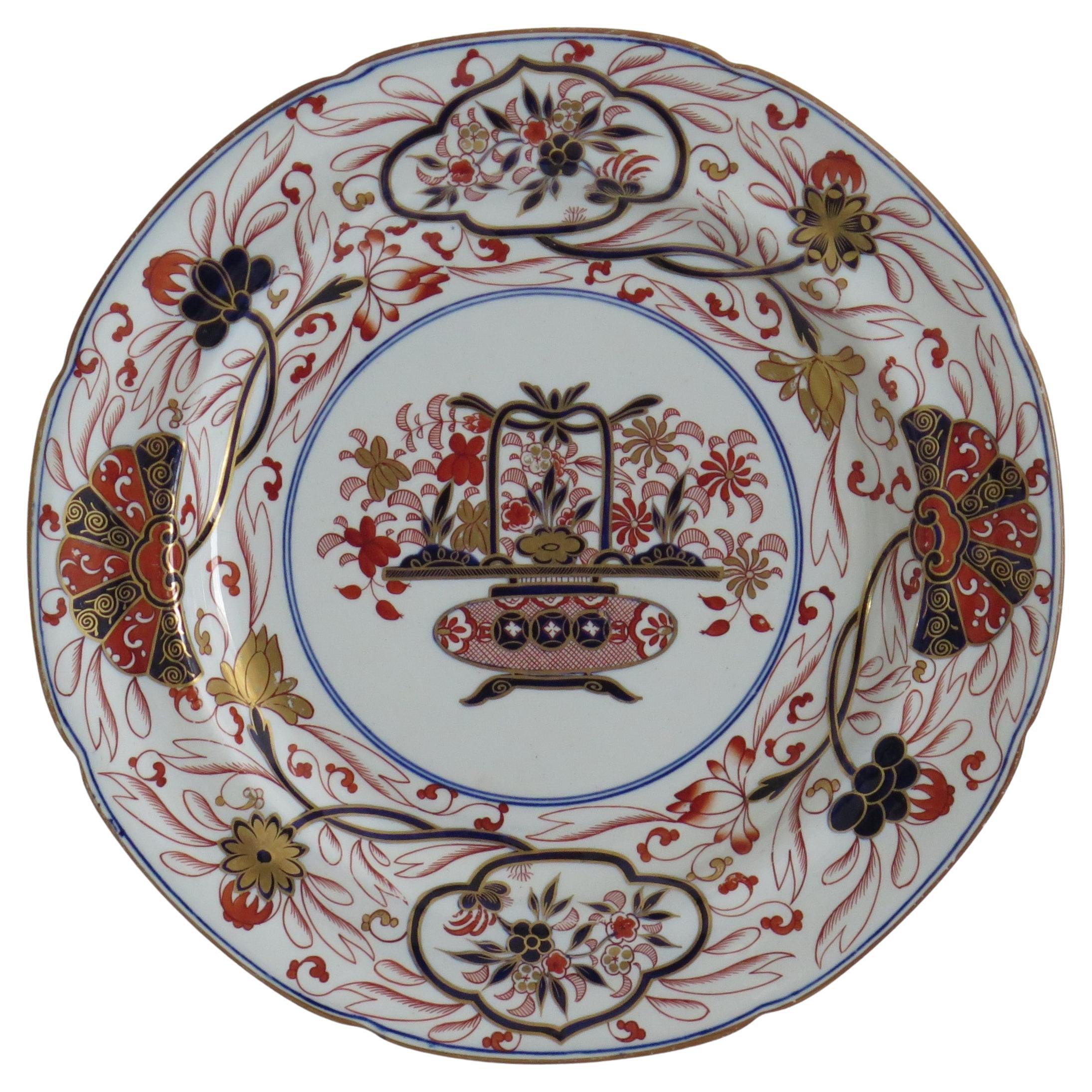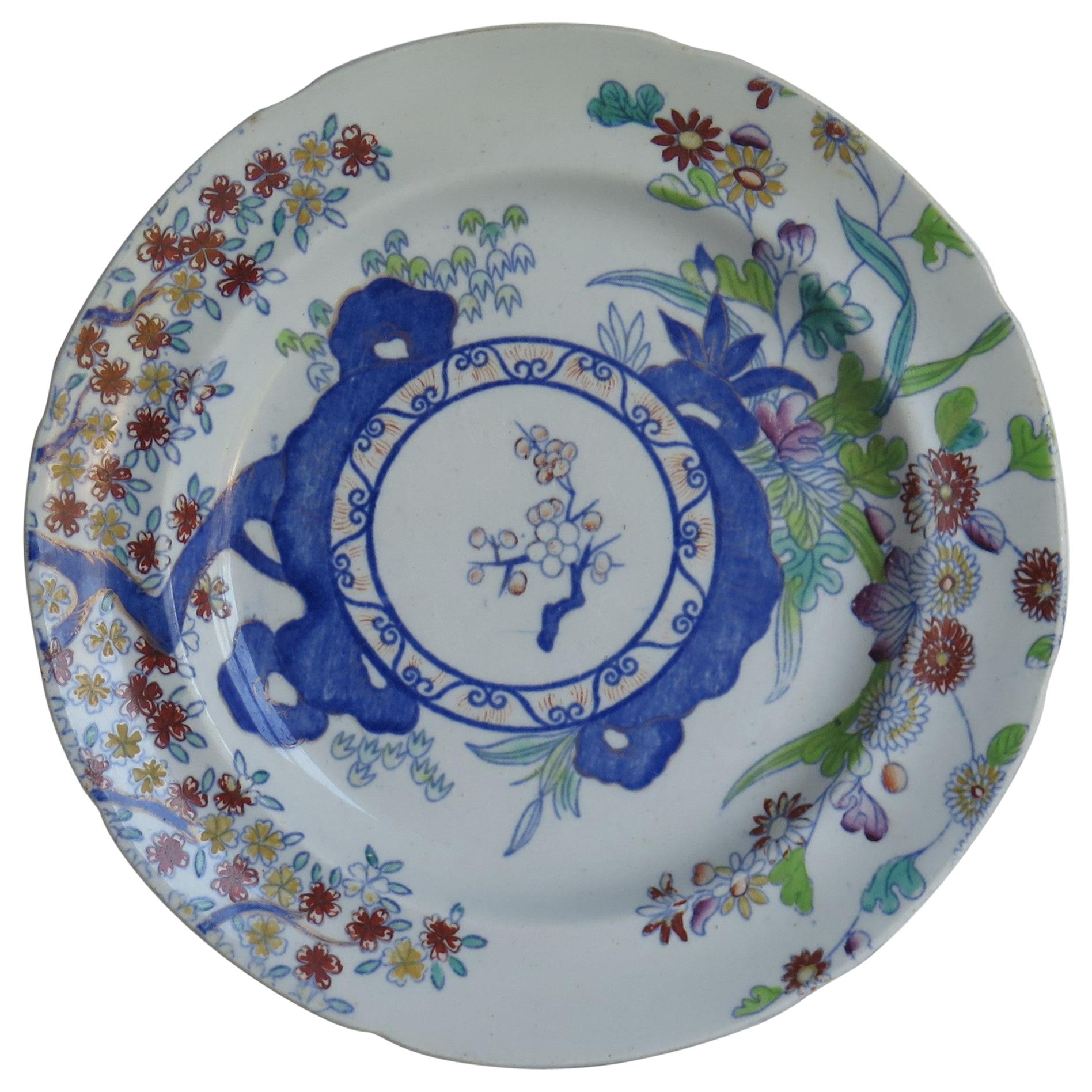Georgian Plate by Spode in Gilded Bow Pot Pattern Number 2954, circa 1820
About the Item
- Creator:Josiah Spode (Manufacturer)
- Dimensions:Height: 0.88 in (2.24 cm)Diameter: 8.07 in (20.5 cm)
- Style:Chinoiserie (Of the Period)
- Materials and Techniques:
- Place of Origin:
- Period:
- Date of Manufacture:circa 1820
- Condition:Wear consistent with age and use. NO chips, NO cracks, NO Restoration. Slight wear. Gilding very good.
- Seller Location:Lincoln, GB
- Reference Number:
Josiah Spode
English potter Josiah Spode, a friend and neighbor of another estimable English ceramist, Josiah Wedgwood, established his eponymous pottery and homewares company in 1770 in Stoke-on-Trent. Spode is one of the oldest and most distinguished of the great pottery companies of Staffordshire, the time-honored home of English ceramics. Within fifteen years of its opening, Josiah’s company became known for its signature blue-on-white palette, and one of the manufacturer’s designers developed a specific cobalt hue for their teapots, trays, bowls and more.
Spode’s founder apprenticed at the Fenton Low workshop under Thomas Whieldon, an important 18th-century potter known today for his tortoiseshell ware (as did Josiah Wedgwood). Later, after establishing his company, Josiah Spode became particularly revered for two technical achievements in the firm’s early decades. The first was to develop a standard formula for the making of bone china — a type of porcelain (made with a mixture of bone ash, minerals and clay) that is dazzlingly white and so strong it can be used to create very thin translucent plates and vessels. The other was to perfect the making of transferware. That process involves the transfer of pictorial images inked on tissue paper — such as the garden scenery in the famous Willow dish patterns — onto ceramics that are then sealed with a glaze.
In 1833, entrepreneurs William Taylor Copeland (the Lord Mayor of London at the time) and Thomas Garrett purchased Spode’s pottery-making company following the death of Josiah Spode III, and the name was changed to Copeland Spode. Then, in 1847, Copeland became the firm’s sole owner and the name changed again, this time to W. T. Copeland and Sons, in 1867 when Copeland retired and his four sons took over the business.
Trading as W. T. Copeland and Sons throughout the mid-to-late 19th century, the company found a formidable competitor in another well-known porcelain maker, Minton. Many of the manufacturer’s Georgian, Rococo and late-Victorian pieces such as its dinner plates, tableware, platters, bowls and baskets were commissioned by wealthy British and European clients and exported for sale throughout the British Empire and to the United States. Several of W. T. Copeland and Sons’ spectacular pieces were exhibited at the Great Exhibition of London in 1851 and the International Exhibitions of London and Paris in 1862 and 1878, respectively.
Spode enjoyed tremendous success both in Britain and elsewhere owing to the beauty and vitality of its decorative imagery. By some counts, Spode created more than 40,000 patterns in the 19th century. Many favorite Spode patterns — among them Blue Italian, India Tree, Greek and Woodland — date to the company’s early years. Spode’s most popular pattern, Christmas Tree, was introduced in 1938. Prices for Spode china vary widely, based on the size of the service, its condition and the pattern, and collectors regard Copeland-marked pieces as Spode china.
The company continued as W. T. Copeland and Sons until 1970 when Spode again became the brand's name. Afterward, during the late 1970s, Spode, Royal Worcester and Palissy came under common ownership. In 2009, the firm was purchased by the Portmeirion Group. However, the Spode and Royal Worcester names continue to flourish as highly popular “traditional English heritage” brands within the Portmeirion company.
Find antique Josiah Spode dinner plates, serveware, ceramics and other pieces on 1stDibs.
- ShippingRetrieving quote...Ships From: Lincoln, United Kingdom
- Return PolicyA return for this item may be initiated within 3 days of delivery.
- Georgian Spode Stone China Side Plate in Oriental Pheasant Pattern, Circa 1820By Josiah SpodeLocated in Lincoln, LincolnshireThis is a very decorative side plate by Spode, made of Stone China (Ironstone) decorated in the Oriental Pheasant pattern, dating to the Georgian period of circa 1820. The plate is circular in shape with a notched rim and is decorated in one of Spode's most vividly coloured and sought after chinoiserie patterns, the "Oriental Pheasant" pattern 2977, a very similar pattern being made by Mason's Ironstone The pattern would have been transfer printed in underglaze blue, then finely hand-painted in bold enamels, with a particularly colourful and distinctive border design. Early Spode pieces like this one are always well painted. The base has the blue printed Spode Stone China...Category
Antique Early 19th Century English Chinoiserie Ceramics
MaterialsIronstone
- Georgian Spode Coffee Can Ironstone Kackiemon Pattern 2117, circa 1820By SpodeLocated in Lincoln, LincolnshireThis is a good stone China (Ironstone) coffee can made by the SPODE factory in the early 19th Century, circa 1820. The coffee can is well potted with cylindrical shape and a loop handle with the distinctive Spode kink to it. The piece is beautifully decorated with hand painted enamels in the chinoiserie Kakiemon style, pattern number 2117. It has the Spode Stone China blue printed...Category
Antique Early 19th Century English Georgian Ceramics
MaterialsIronstone
- Georgian Spode Dinner Plate a Ironstone Chinoiserie Pattern No.2283, circa 1820By Josiah SpodeLocated in Lincoln, LincolnshireThis is a very beautiful hand painted dinner plate, produced by the Spode factory in the late Georgian period, Circa 1820. This is pattern number 2283, the chinoiserie decoration ...Category
Antique Early 19th Century English Chinoiserie Ceramics
MaterialsIronstone
- Georgian Spode Dinner Plate B Ironstone Chinoiserie Pattern No.2283, circa 1820By Josiah SpodeLocated in Lincoln, LincolnshireThis is a very beautiful hand painted dinner plate, produced by the Spode factory in the late Georgian period, Circa 1820. This is pattern number 2283, the chinoiserie decoration ...Category
Antique Early 19th Century English Chinoiserie Ceramics
MaterialsIronstone
- Georgian Spode Plate or Dish Chinoiserie Pattern No. 1867 porcelain, circa 1820By Josiah SpodeLocated in Lincoln, LincolnshireThis is a beautiful square plate or dish produced by the Spode factory and made of porcelain, in the early 19th Century, Circa 1815 to 1827. The dish is well potted on a low foot ...Category
Antique Early 19th Century English Chinoiserie Decorative Bowls
MaterialsPorcelain
- Plate by Copeland Late Spode in Japanese Kakiemon Pattern No. 2117, circa 1850By Copeland SpodeLocated in Lincoln, LincolnshireThis is a beautiful plate in the Japanese inspired Kakiemon pattern number 2117, produced by the Copeland - Late Spode factory and made of earthenware potte...Category
Antique Mid-19th Century English Chinoiserie Pottery
MaterialsPottery
- Five Spode Porcelain Trio's Decorated in Pattern 3614, circa 1822By Josiah SpodeLocated in Exeter, GBFive wonderful Spode Etruscan shape trios circa 1822. Each cup and saucer is finely decorated in Spode’s pattern 3614 with finely painted English Cabbage roses and embellished with r...Category
Antique 19th Century British Porcelain
MaterialsPorcelain
- Early Spode Red Greek Pattern TileBy Josiah Spode, SpodeLocated in Fort Lauderdale, FLA Neoclassical red transferware tile made by Spode 1806-1810, with the ‘Refreshments for Phliasian Horseman’ pattern. Sir William Hamilton’s Collection of Etruscan, Greek and Roman antiquities, first published in 1766 by Pierre d’Hancarville, was a landmark publication in English design. It intended to disseminate the Antique style through its engravings of Attic pottery. The catalog’s faithful reproductions of Classical vases led British potteries, including Spode, to adapt or even copy the ancient art for modern life. These Spode Greek pattern tiles reflect the major influence of Hamilton’s catalog on English Neoclassicism. The central scene was taken directly from the catalog. This tile can be dated to a narrow window of production in the Spode factory, 1806-1810. During that time, Spode used a technique known as the “Pluck and Dust” method to print in red transfer designs onto creamware. Using this method, source prints were transferred overglaze using tissue imprinted with a very faint rendition of the design outlined in sticky oil. The decorator applied the tissue to the object then carefully “plucked” or pulled it away, leaving the sticky oil design behind. Then, a finely-ground enamel color was “dusted” onto the surface, sticking to any areas that had the oil. A final firing at a low temperature in the enamel kiln made the pattern permanent. The Pluck and Dust technique improved upon bat-printing and enabled larger designers to be transferred. It was short-lived, however, as under-glaze transfer printing soon took over as the preferred method for producing transferwares. Dimensions: 5 in. x 5 in. x 1/4 in. Condition: Excellent. Slight chip to the upper left corner measuring approximately 0.9 cm. in length. Provenance: The Collection of Nancy and Andrew Ramage Jonathan Horne...Category
Antique Early 19th Century English Neoclassical Pottery
MaterialsEarthenware, Creamware
- Early 19th Century Spode Red Greek Pattern TileBy Josiah Spode, SpodeLocated in Fort Lauderdale, FLA Neoclassical red transferware tile made by Spode 1806-1810, with the ‘Zeus in His Chariot’ pattern. Sir William Hamilton’s Collection of Etruscan, Greek and Roman antiquities, first published in 1766 by Pierre d’Hancarville, was a landmark publication in English design. It intended to disseminate the Antique style through its engravings of Attic pottery. The catalog’s faithful reproductions of Classical vases led British potteries, including Spode, to adapt or even copy the ancient art for modern life. These Spode Greek pattern tiles reflect the major influence of Hamilton’s catalog on English Neoclassicism. The central scene was taken directly from the catalog. This tile can be dated to a narrow window of production in the Spode factory, 1806-1810. During that time, Spode used a technique known as the “Pluck and Dust” method to print in red transfer designs onto creamware. Using this method, source prints were transferred overglaze using tissue imprinted with a very faint rendition of the design outlined in sticky oil. The decorator applied the tissue to the object then carefully “plucked” or pulled it away, leaving the sticky oil design behind. Then, a finely-ground enamel color was “dusted” onto the surface, sticking to any areas that had the oil. A final firing at a low temperature in the enamel kiln made the pattern permanent. The Pluck and Dust technique improved upon bat-printing and enabled larger designers to be transferred. It was short-lived, however, as under-glaze transfer printing soon took over as the preferred method for producing transferwares. Dimensions: 5 in. x 5 in. x 1/4 in. Condition: Excellent. Provenance: The Collection of Nancy and Andrew Ramage Jonathan Horne...Category
Antique Early 19th Century English Neoclassical Pottery
MaterialsEarthenware, Creamware
- Early Spode Hand Painted Porcelain Plate / Saucer, circa 1820By SpodeLocated in Ross, CARegency period finely painted plate/saucer with pink roses and gilt leaves, made in England around 1820.Category
Antique Early 19th Century English Regency Ceramics
MaterialsPorcelain
- English Pottery Pearlware Botanical Plates, circa 1840Located in Downingtown, PAEnglish pottery pearlware botanical plates, circa 1840 The folky painted plates have a scalloped rim. In the center of each plate is a large...Category
Antique Early 19th Century English Folk Art Pottery
MaterialsPearlware, Pottery
- Antique Spanish PotLocated in Leamington Spa, WarwickshireDecorative antique Spanish glazed pot. Reference: 7477 Dimensions 11 inches (28 cms) High 11.5 inches (29 cms) Diameter.Category
Antique 19th Century Spanish Ceramics
MaterialsCeramic, Pottery






